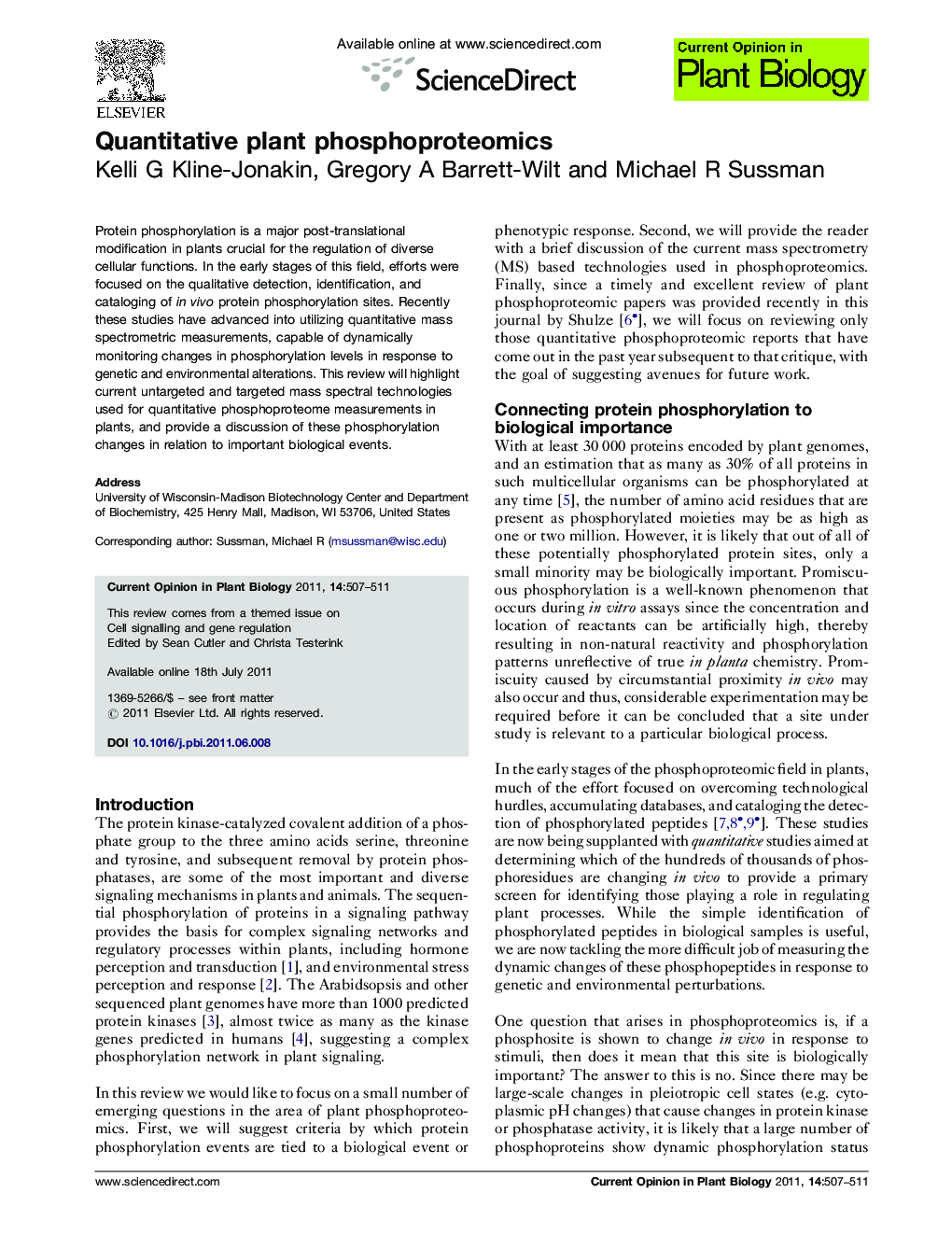| Article ID | Journal | Published Year | Pages | File Type |
|---|---|---|---|---|
| 2046831 | Current Opinion in Plant Biology | 2011 | 5 Pages |
Protein phosphorylation is a major post-translational modification in plants crucial for the regulation of diverse cellular functions. In the early stages of this field, efforts were focused on the qualitative detection, identification, and cataloging of in vivo protein phosphorylation sites. Recently these studies have advanced into utilizing quantitative mass spectrometric measurements, capable of dynamically monitoring changes in phosphorylation levels in response to genetic and environmental alterations. This review will highlight current untargeted and targeted mass spectral technologies used for quantitative phosphoproteome measurements in plants, and provide a discussion of these phosphorylation changes in relation to important biological events.
► Plant phosphoproteomics is transitioning from qualitative large-scale phosphoprotein identification to quantitative measurements that monitor dynamic changes in phosphorylation events. ► Quantitative untargeted MS phosphoproteomic methods identify changes in protein phosphorylation in a global, undirected manner and are useful for first identification of potentially important signaling changes. ► Quantitative targeted MS methods are useful for high-throughput secondary screening of potentially important protein phosphorylation events under a multitude of environmental or genetic perturbations. ► To confirm the importance of a phosphosite in a biological event, genetic based studies, such as site directed phosphosite mutagenesis, should also be performed.
